Occasionally, fleeting streaks of light grace the sky, disappearing in an instant, yet leaving a mesmerizing impression. These are commonly known as shooting stars, but in reality, they are meteors – remnants of comets or asteroids that burn up upon entering Earth’s atmosphere. However, there are rare instances when a celestial body manages to penetrate Earth’s gaseous shield and make contact with the planet’s surface, causing significant environmental damage. Such an unwelcome visitor from the cosmos arrived at the beginning of the last century – the Tunguska meteorite.
Discover the location and date of this unexpected encounter with an extraterrestrial entity, along with intriguing facts and theories surrounding it, in the following 24CMI article.
What was the date and location of the Tunguska meteorite impact?
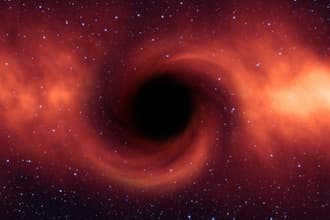
The Tunguska meteorite fell on June 30, 1908, at around 7 am in the basin of the Podkamennaya Tunguska River in Eastern Siberia, which was part of the Russian Empire at the time.
Witnesses of the event were surprised by a bright flash of light. Observers noted that the color of the bolide changed as it flew across the sky, from red to yellow and then white. Those who were in the vicinity of the impact felt an intense heat, similar to standing near an open fire.
Object characteristics
An incredibly luminous spherical entity of celestial origin, whose precise dimensions have yet to be definitively ascertained, descended into the Earth’s atmosphere. In tandem with this celestial event, auditory phenomena reminiscent of thunderous reverberations reverberated throughout the vicinity. As per Ivan Murzinov, esteemed member of the Tsiolkovsky Academy of Cosmonautics, the extraterrestrial entity manifested as a stony meteorite hurtling through space at a velocity of approximately 20 km/s, before ultimately detonating at an altitude ranging between 35 to 45 km above the Earth’s surface.
Results
Following the reported collision of a meteorite and the subsequent detonation, which took place in a taiga region devoid of any human settlements, a thunderous noise resonated throughout the area – its reverberations reaching a distance of 1000 km. Simultaneously, seismographs located in various locations across the globe registered the impact of the shockwave. The force of the explosion was estimated to be between 15-40 Mt in terms of TNT equivalence, placing it on par with the energy released by an average hydrogen bomb.
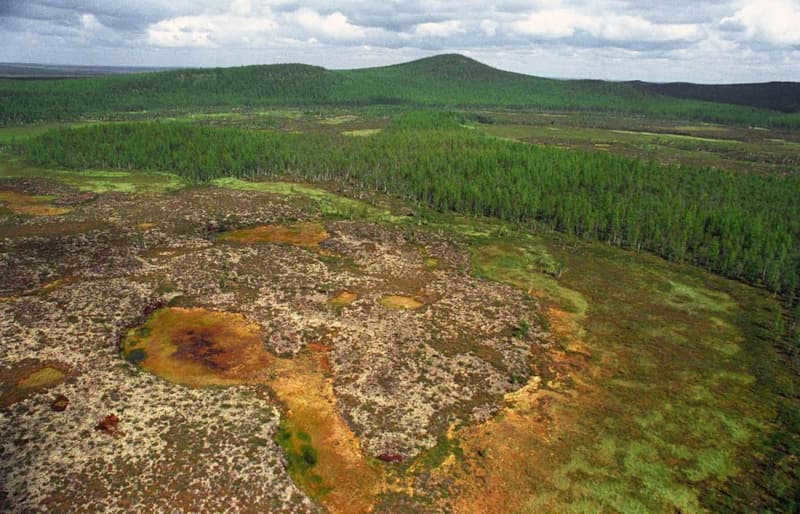
Research History
The first comprehensive account of the events during that time was documented on July 15, 1908, when S. Kulesh published an analysis of the Tunguska catastrophe in the newspaper “Siberia”. Kulesh’s article followed closely after traveler and ethnographer Alexander Averyanov’s note in “Sibirskaya Zhizn” a few days earlier, which was primarily based on hearsay and lacked credibility. Nevertheless, it took a couple of years for research expeditions to commence after the meteorite impact in the 1920s, albeit at a very slow pace.
As an illustration, the 1921-1922 expedition only managed to elicit a series of fresh testimonies from the local populace, thereby providing a more tangible understanding of the purported crash site of the celestial object, while leaving no doubt about the occurrence of the explosion. They also observed an intriguing anomaly manifested in the fan-shaped fallen forest – with the trees in the center remaining upright, albeit stripped of their bark and branches.
More substantial findings emerged in 1927: a team of researchers did not uncover the substance that was believed to compose the Tunguska meteorite, but did detect traces of silicate and magnetite spheres. Furthermore, they were able to identify elements that had made their way onto Earth, likely originating from outer space.
Even though there was no crater, Leonid Kulik, a Soviet mineralogist, still believed that the extraterrestrial object had a meteoric origin. However, he later changed his mind and no longer thought that the entire space body had passed through the Earth’s atmosphere. Instead, he favored the idea that it had broken into smaller pieces.
Hypotheses
There are numerous theories regarding the origin of the Tunguska space object, but there is no consensus among scientists.
Below, you will find a variety of hypotheses about what occurred, stemming from both scientific and fictional sources:
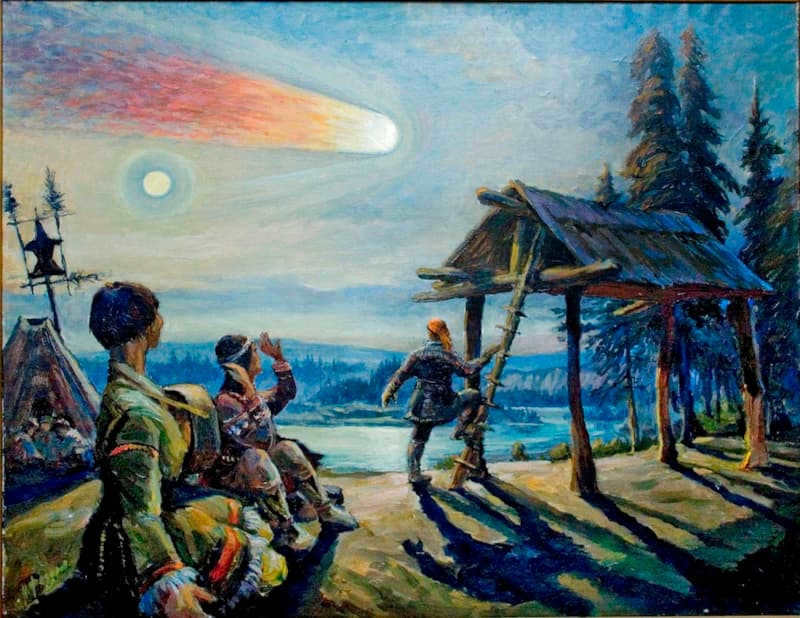
- Astronomers from various nations posit that the comet likely disintegrated in the Earth’s atmosphere, leading to the conclusion that the Tunguska meteorite may have been an asteroid composed of stone. Scientists speculate that the object’s material fragmented and was dispersed by the force of the wind.
- In the 1940s, Alexander Kazantsev, a writer of science fiction literature, intrigued by eyewitness accounts of the explosion caused by the extraterrestrial entity in question, put forth the hypothesis that the nature of the object was not natural, but rather artificial. According to Kazantsev’s theory, the Tunguska event served as evidence of a visit from an alien civilization, whose spacecraft had crashed during the landing phase.
- In 1965, American scientists put forward a theory that the substance of the Tunguska extraterrestrial object contained antimatter, which, upon entering the Earth’s atmosphere, annihilated and merged into a single form of energy, leaving no visible evidence behind.
- One fascinating hypothesis suggests that Nikola Tesla conducted an additional experiment in which he attempted to transmit a concentrated energy mass to Eastern Siberia, specifically choosing the region due to its sparse population. Interestingly, prior to the incident, Tesla had checked out relevant books from the library and had marked the locations where the Tunguska event had been observed on a map in his office.
The Tunguska event was featured in the popular series “The X-Files” in the realm of cinema. The episode “Tunguska” revolves around a virus extracted by Russian scientists from fragments of the fallen meteorite. The subject of the space object in question was also explored by domestic filmmakers. Yuri Moroz concluded the multi-part film “Ugryum River” with the Tunguska meteorite’s impact in Eastern Siberia.
The music industry also paid attention to the Tunguska event. For instance, Metallica’s music video depicted the discovery of extraterrestrial spores at the meteorite crash site, which aided the USSR in establishing complete control over the planet.
Survivors
Based on the research conducted by scientists at the University of the United States and their counterparts in Russia, it can be concluded that humanity was fortunate in the incident involving the Tunguska object, as the “extraterrestrial visitor” crashed in a sparsely populated area, greatly reducing the number of casualties – as indicated on the map, the crash site is located far away from any major settlements.
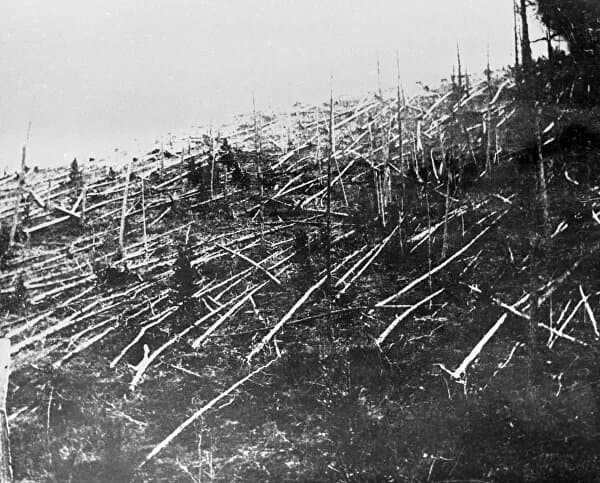
A comprehensive survey was carried out by the researchers, gathering testimonies from a considerable number of eyewitnesses – approximately two thousand individuals were included. The findings revealed that during the moment of the explosion, only 30 individuals were present in the affected vicinity. Numerous individuals lost consciousness and sustained severe injuries, with confirmed reports of at least three fatalities.
Other crash sites on the world map
There are at least two events similar to the Tunguska meteorite fall.
- Brazilian Tunguska. In August 1930, after the Sun turned bright red, it started raining ash, followed by thunder-like sounds and trembling earth. The thunderous sounds spread 240 km from the epicenter and were heard in the towns of Esperanza and Atalaya do Norti. Local residents initially mistook it for a military exercise – only five days later did they learn from the missionary Fedele d’Alviano, who came to them, about the existence of meteorites and their fall to Earth.
- Vitimsky bolide. In September 2002, a luminous celestial body was observed near the village of Mama in the Irkutsk region. Witnesses reported specific sounds and a glowing effect accompanying the bolide. According to their accounts, the size of the object was similar to that of the visible Moon, and its illumination could be seen in the taiga forest for a considerable period of time. The impact site resembled a smaller-scale version of the incident in the Podkamennaya Tunguska basin.
Instances of space objects traversing the Earth’s atmosphere are not uncommon. Fortunately, throughout human history, these occurrences have not resulted in worldwide calamities. Nevertheless, the Tunguska meteorite, along with similar occurrences, serves as a reminder that individuals must remain vigilant, and scientists must constantly monitor the near-Earth space in order to promptly develop a strategy to avert extraterrestrial hazards.
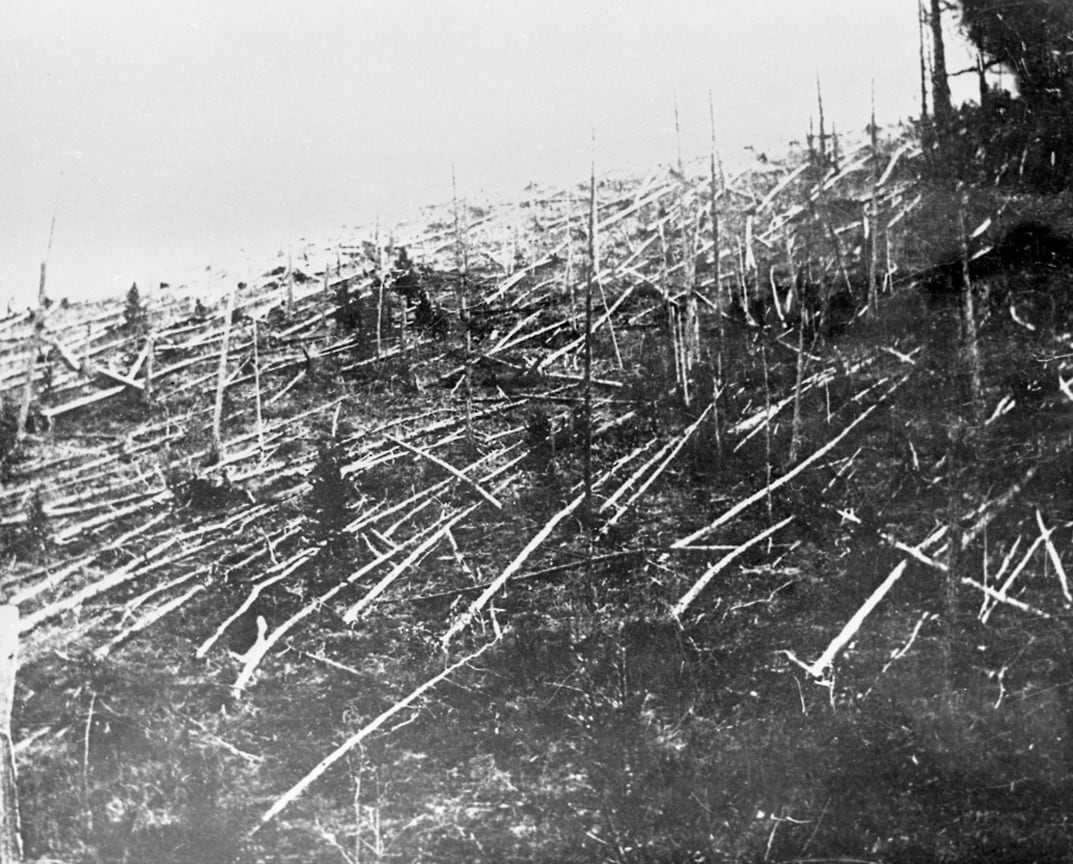
Click here to view the content in full screen
In the region where the Tunguska meteorite fell in 1965, new discoveries have been made.
According to recent studies, it is not necessary for a cosmic object to actually hit the Earth in order for similar events to occur. The witnesses of the Tunguska event and the subsequent scientific investigations have led to various conclusions over the decades. More recent research has shed further light on this phenomenon. Read all about it in the article “Kommersant-Science”.
The phenomenon of the second sun
During the early hours of June 30 (according to the old calendar), 1908, a peculiar event unfolded in the skies above a vast expanse of Eastern Siberia. For a brief period of approximately five minutes, a remarkable spectacle took place – a second sun appeared, traversing the sky from the southeast to the northwest. This celestial anomaly left in its wake a trail of dust that lingered for several hours. The awe-inspiring movement culminated in a mighty explosion at 07:14 local time, high above the desolate taiga region in the basin of the Podkamennaya Tunguska River.
The magnitude of the blast is approximated by different scientists to be between 10 and 50 megatons in terms of TNT equivalent (equivalent to 500-2000 Hiroshima explosions). The sound was audible at a distance exceeding 1,000 kilometers, and the shockwave traveled around the entire planet twice. As a result, approximately 2,150 square kilometers of woodland were scorched and consumed (which is slightly smaller than the area of Moscow, including TINAO, or precisely the same size as two “old” Moscows) – totaling around 80 million trees.
During the first half of June, at approximately 8 o’clock in the morning, a massive meteorite reportedly fell a few fathoms away from the railroad bed near Filimonovo, not far from Kansk. Witnesses described the event as accompanied by a tremendous rumble and a deafening impact that could be heard over a distance of more than 40 versts. The train was even forced to stop by the driver, and the public hurried to the location where the distant traveler had landed. Unfortunately, it was impossible to examine the meteorite up close as it was still red-hot from its descent. Most of the meteorite had crashed into the ground, with only its top protruding, revealing a whitish-colored stone mass. This extraordinary event was reported in the newspaper “Siberian Life” on June 29, 1908.
In order to obtain these numbers, experts examined all accounts given by Soviet scientists, including those from local Evenk reindeer herders. In total, more than 700 testimonies were reviewed, mentioning 1,984 individuals from 386 different locations. Specifically, 44 testimonies were provided by individuals who were within 130 km of the epicenter. It is worth noting that the testimonies themselves were collected in three stages: immediately after the fall in 1908, in the 1920s-1930s, and in the 1960s when interviewing elderly residents.
“The smoke rose to a height equivalent to about five trees. Shortly after, the ground started to shake and an immense amount of thunder could be heard. I was extremely frightened and the fear made me very ill. At that time, there were political exiles living in Preobrazhenka, and they claimed that a celestial body had crashed” (Nadezhda Konenkina, Preobrazhenka settlement).
Years of Exploration in the Lifeless Woods
The investigation in the region of the Tunguska incident initiated in 1927 – it was during this time that geologist Leonid Kulik’s expedition successfully located a “lifeless forest” where, as recounted by the native Evenks, the deity Agdy – the god of thunder, lightning, and fire – descended to the ground. In reality, this very forest, rapidly covered in new trees as a result of the abundance of ash and humus, ended up being the sole physical evidence of a potential meteorite impact.
The image of the forest collapse was incredibly unique: the entire area was shaped like a butterfly, with some trees fallen and others still standing but missing branches. Interestingly, untouched groves grew in the very center where the impact should have occurred if it was a collision with the Earth’s surface. This led to the hypothesis of a space object exploding in the air, with fragments possibly changing direction after the explosion. This would explain the uneven distribution of the debris with its complex-shaped boundaries.
“Oh, it was a truly terrifying experience. The ground beneath my feet suddenly erupted in flames, engulfing the forest in an instant. I lost 28 of my reindeer, which were carrying loads of flour, in the blink of an eye. Thankfully, I managed to save myself by seeking refuge in the swamp. As I made my way to Vanavara, I couldn’t help but feel a sense of fear and unease. The local residents, known as the Luchis, were equally terrified. The force of the fire caused all the windows in their homes to shatter and their stoves to crack. I witnessed one elderly man being lifted by the wind and forcefully thrown to the ground. He remained unconscious for a staggering three hours.” (Lyuchetkan from the Korkogir family, Vanavara factoria).
Exploring the Absence of a Crater: The Comet Hypothesis and Alternative Explanations
Prior to the Tunguska event, Europe and Western Siberia experienced several unusual atmospheric phenomena, including luminous clouds, solar halos, exceptionally bright twilight, and illuminated nights. Reports from newspapers indicate that the streets of certain cities were so brilliantly lit at midnight that one could effortlessly read small print.
It wasn’t until 1922 that the scientific community began to consider the connection between these phenomena and the passage of the bolide, as well as the subsequent explosion in the Siberian taiga. During this time, theories emerged suggesting that the bolide was actually a comet. This hypothesis proposed that the comet’s vaporizing tail released crystalline particles into the atmosphere, resulting in the observed light anomalies through reflection and refraction of light.
“When I was seven years old, I was playing near the fence. I glanced up at the sky and noticed a brilliant star soaring through the air. It moved so quickly and made a loud noise that it frightened me, causing me to run across the street to my neighbor’s house.” (Stepan Zhuravlev, Kezhma village).
The theory suggesting that a comet caused the Tunguska event is supported by the lack of an impact crater or any remnants of a meteorite found during years of research. The comet, composed of dust and frozen gases, entered Earth’s atmosphere at a high speed, causing it to explode in the air. As a result, there was no crater as the comet never reached the Earth’s surface, and any fragments melted upon explosion, leaving only destruction in its wake.
However, critics of this theory contend that the ice would have completely melted at an extremely high altitude of approximately 30 km, resulting in no impact on the Earth’s surface. As a result, the absence of a crater and debris has led to various alternative hypotheses, such as a potential earthquake (which can cause dust emissions and unusual atmospheric phenomena) or even the eruption of a nearby ancient volcano (which conveniently happens to be located in the same area as the devastated Tunguska forest).
“Out of nowhere, in the early hours of the morning, the canines let out a mournful howl, causing the young ones to burst into tears. Startled, my wife, the elderly gentleman, and I jolted awake and bore witness to an extraordinary sight – we strained our ears, and the sound of knocking echoed from beneath us, accompanied by the trembling of our tent. Hastily, I leapt out of my sleeping bag and hastily began to dress, when suddenly an unseen force forcefully pushed against the ground.”
Without warning, a brilliant flash streaked across the sky, followed by a deafening clap of thunder. Terrified, I stumbled and collapsed to the ground. As I looked up, I witnessed the wind hurling timber and the flames devouring the dry wood below… Thick smoke billowed, engulfing the taiga as the scorching heat intensified.
NASA’s probabilistic model
In 2019, a team of scientists at NASA developed a computerized model to analyze the impact of the Tunguska meteorite. The findings of their research indicated that the diameter of the meteorite was estimated to be between 70 and 80 meters, with an explosion force ranging from 20 to 30 megatons. Furthermore, the event was believed to have taken place at an altitude of 12 to 17 kilometers. The significance of this study lies in the fact that astronomers meticulously calculated and examined a staggering 50 million potential scenarios of the meteorite’s entry into the Earth’s atmosphere, explosion, and subsequent damage.
The PAIR model, a modern mathematical model that explains the disintegration and burning of meteorites in the atmosphere, was used to conduct the calculations. These calculations were based on a variety of data collected over many years, including early eyewitness accounts and recent reports of thermal damage on surviving trees. By comparing these accounts and examining the pattern of the explosion, scientists were able to estimate the possible trajectory.
“We, a group of twelve men, embarked on a journey to the left bank of the Angara River, specifically to the rock above Kova, which was approximately six kilometers away. Our purpose was to cut millstones for the mill. However, we were suddenly confronted with a terrifying event that still haunts our memories. The earth shook violently, causing rocks to dislodge from the rock formation, and even the water in the Angara River exhibited ripples. In a state of shock, we hurriedly made our way to the water’s edge, unsure of what was happening. A thunderous sound seemed to be emanating from the sea.”
After a prolonged period of silence, Grandpa Stepan broke the silence by suggesting, “The only explanation for this is a light show. We should head home soon.” So, we set sail to Alyoshkino, and as we arrived, people emerged from every house. In some dwellings, the window frames had collapsed, icons had toppled from the shelves, and even the roof of Grandpa Stepan’s hut had caved in.
Initially, we believed that it was the end of the world. However, our doubts were dispelled when Osip Efimovich, an exile, approached us and declared, “What you witnessed was not the apocalypse. It was a stone that dislodged from the sky and plummeted to the ground.” With this revelation, we were able to regain our composure as if nothing had happened” (Izmail Sizykh, Alyoshkino village).
Observing Russia from a Fresh Perspective: A Meteorite Encounter that Defied Gravity
However, a groundbreaking study emerged in 2020, presenting an alternative viewpoint by researchers hailing from the Siberian Federal University, MIPT, and the Lebedev Physical Institute of the Russian Academy of Sciences. Their proposition urged us to shift our gaze and ponder the matter from an unconventional standpoint. Based on their meticulous calculations, it was hypothesized that a sizable metallic entity, penetrating the Earth’s atmosphere at a shallow trajectory, could evade a cataclysmic descent and instead traverse the celestial sphere, skimming perilously close to our planet’s surface without leaving any discernible remnants.
“The study focused on examining the circumstances surrounding the passage of asteroids measuring 200, 100, and 50 meters in diameter through the Earth’s atmosphere. These asteroids were composed of three different materials: iron, stone, and water ice. The investigation aimed to determine the minimum trajectory height for these asteroids, which was found to be within the range of 10-15 km. The article’s summary states that the findings support our theory and provide an explanation for the Tunguska phenomenon, a longstanding mystery in the field of astronomy. According to our research, this event was caused by the entry of an iron asteroid into the Earth’s atmosphere, followed by its transition into a near-solar orbit.”
The Tunguska meteorite, as concluded by Russian scientists, was a metallic object measuring between 100 to 200 meters in diameter. It traveled approximately 3,000 kilometers through the atmosphere at an altitude of 11 kilometers, with a velocity of 7 meters per second. The researchers believe it was composed of iron, as an icy object would have melted due to atmospheric friction, while a rocky object would have disintegrated under immense pressure and the penetration of air through microcracks.
This explanation accounts for the lack of an impact crater and debris. First, the object did not actually make contact with the Earth’s surface. Second, the iron object was moving at such a high velocity and was extremely hot, causing matter to be lost through the sublimation of individual atoms. These atoms then mixed with the widespread iron oxides found on Earth, making it impossible to separate them from the soil.
“The sky spanned a vast expanse, with the entire northern section ablaze. In that moment, the heat became unbearable, as if my shirt had caught fire, emanating from the northern side where the fire was. The intensity was such that I was on the verge of ripping off my shirt, but suddenly the sky crashed down, accompanied by a powerful impact that sent me flying three fathoms away.”
Following the impact, a cacophony erupted as if rocks were descending or cannons were firing, causing the earth to tremble. As I lay on the ground, I instinctively shielded my head, fearing that the stones might shatter my skull.
In the instant when the sky split open, a scorching wind from the north swept past the huts like a cannon blast, leaving behind tracks on the ground and causing damage to the growing onions. It was then discovered that numerous window panes had been shattered, and the iron lining for the lock at the barn door had been broken” (S. B. Semenov, Vanavara factory).
If we were to accept this hypothesis, the Tunguska meteorite would not be referred to as a meteorite – this term is used to describe “bodies of cosmic origin that have reached the Earth’s surface” (BRE, 2004-2017), or simply put, “falling to Earth from interplanetary space” (BSE, 1969-1978). It would be more accurate to refer to the Tunguska as a “meteor body” which briefly became a “bolide”. Of course, we can never truly know if this is the case, but this explanation appears to be the most comprehensive (that is, it seems to account for all the observations).
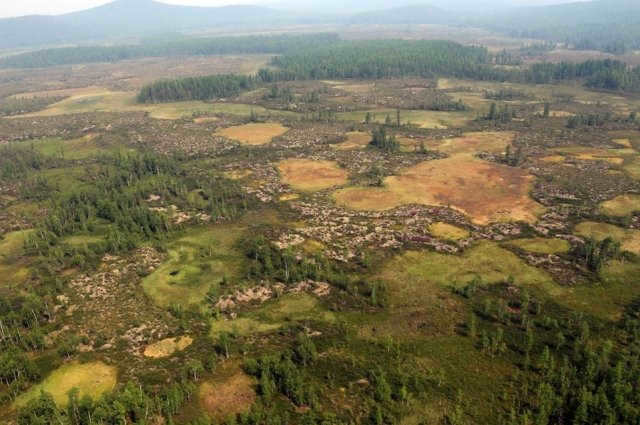
It has been 115 years since the Tunguska meteorite fell. Since then, numerous scientific expeditions have explored the site of the explosion, and many theories have been proposed. While the physical details of the explosion have been well-documented, two crucial mysteries remain unsolved: the mechanism of destruction and the composition of the cosmic body. Despite this, the recent theory put forth by scientists from Krasnoyarsk is regarded as one of the most credible.
Meteorite, Extraterrestrials, and Tesla
During the early hours of June 30, 1908, a brilliant celestial object traversed the Podkamennaya Tunguska river basin, moving from southeast to northwest. As it made its way through the sky, thunderous sounds accompanied its path, culminating in an incredibly powerful explosion. Experts estimate that this event took place at an altitude ranging from 5 to 15 kilometers, releasing an energy equivalent to 50 megatons of TNT. The resulting blast wave decimated approximately 80 million trees across an area exceeding 2 thousand square meters.
The ground trembled for hundreds of kilometers. The explosion also led to unusual atmospheric phenomena. In Russia, most European countries, and some parts of Asia, the night sky had a “glow”. Darkness did not descend after sunset. Local residents witnessed colorful auroras, a solar halo, shimmering clouds, and other optical effects in the sky. This phenomenon persisted for several days.
Today, there are numerous theories surrounding the Tunguska catastrophe. These range from the impact of a large celestial object – such as a comet, asteroid, meteorite, or alien spaceship – to the explosion of something originating from the ground, such as natural gas or a departing alien spacecraft.
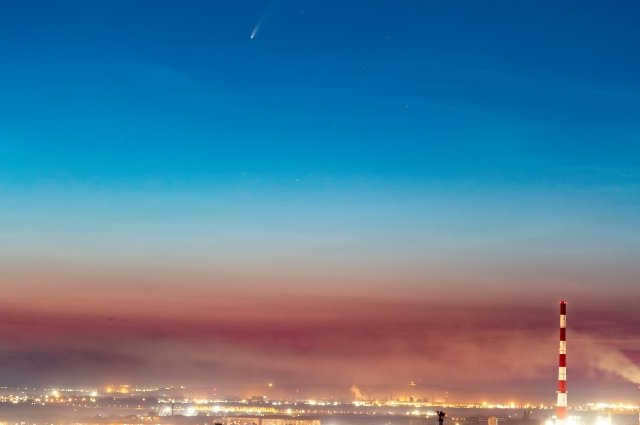

Where can we find evidence?
In any case, when a celestial body falls and explodes, it is expected to leave behind some sort of evidence. Throughout history, there have been numerous instances of objects crashing onto Earth. For instance, the Arizona meteor crater contained iron and nickel, the Popigai Basin yielded diamonds of impact origin, but at the site of the Tunguska disaster, there is no trace to be found.
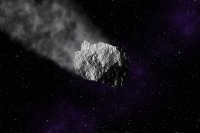
The unusual bright evenings observed following the explosion can be attributed to the shock wave lifting fine particles from the Earth’s surface, absorbing moisture from the atmosphere, and creating ice crystals that effectively scatter the light of the setting sun below the horizon. This occurrence is reminiscent of silver clouds, albeit with a significantly greater concentration of ice nanocrystals.
A paradox in science
According to the scientist, in order to ultimately resolve this issue, we require the most up-to-date software capable of computing the shock wave strength for a moving object at a speed of 20 km/h, while also taking into consideration the vaporized iron explosion at the lowest point of its trajectory. This investigation will help shed light on another perplexity: why the area of forest collapse caused by the shock wave is not elliptical, but rather relatively symmetrical (assuming the terrain is accounted for). Additionally, this enigma must also be elucidated for scientists. However, the Russian programs can only calculate the force for objects traveling at a velocity of 10 km/h or slower. Although such programs exist in the United States, access to them is currently restricted. Sergei Karpov is also concerned that the Americans, possessing all the advancements of Siberian scientists, may be able to conclude the research and claim all the recognition for solving this enigma.
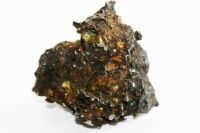
Preserve the human race
“To uncover the enigma of the Tunguska event, we require a government initiative and substantial investment. It is imperative to coordinate expeditionary efforts. While there are individuals in Moscow, Tomsk, and Krasnoyarsk who are eager to investigate the phenomenon, there is a shortage of equipment – both drilling equipment to extract rock cores and analytical equipment to yield results in laboratory studies,” stated Professor Nikolai Drozdov, Chairman of the Committee on History, Archaeology, and Ethnography at the Krasnoyarsk Regional Branch of RGO, Doctor of Historical Sciences. “The significance of unraveling this mystery cannot be overstated. Enormous bolides traverse our surroundings, and one day their trajectory may intersect closely with our planet, or even result in an impact. It is imperative that we study them and develop technologies to potentially avert disaster. Scientists are diligently working towards this objective, but the pace at which they can accomplish it prior to the next occurrence hinges on the level of interest from national and global authorities.”
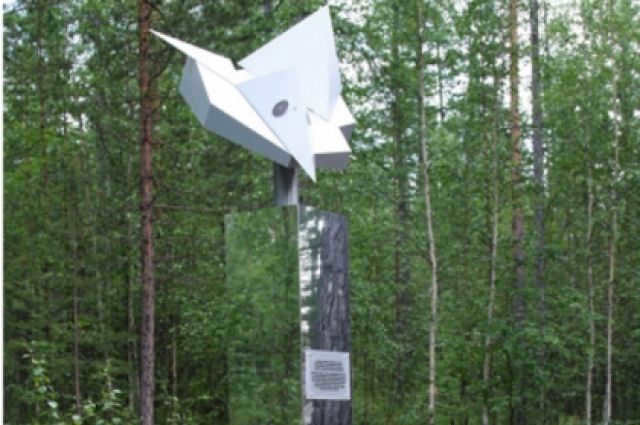

Around seven o’clock in the morning local time on June 30, 1908, a massive fireball traversed the region of the Yenisei River basin. The trajectory culminated in a tremendous explosion at an altitude of approximately 7 kilometers, which was documented by observatories worldwide. Current estimations indicate that the explosion’s force equaled 50 megatons, comparable to the detonation of the most potent hydrogen bomb. Windows in homes shattered hundreds of kilometers away from the epicenter of the blast.
If the Tunguska meteor had detonated while passing over Europe, it could have obliterated a city like St. Petersburg. If this had occurred fifty years later, the explosion might have been mistaken for a nuclear strike, potentially triggering the onset of World War III. Fortunately, the impact took place in a scarcely populated region of Siberia.
In 2013, curiosity in the “Tunguska phenomenon” resurfaced following the fall of a meteorite near Chebarkul.
Research on the incident in the Podkamennaya Tunguska area has been ongoing for over a century, yet a definitive answer to the question of what truly transpired on June 30th remains elusive.
During the past four decades, numerous iterations have emerged, and the compilation of hypotheses that are regarded as the primary ones exceeds twenty-four.
Out of the plethora of possibilities, we have chosen eight of the most captivating theories surrounding the Podkamennaya Tunguska incident.
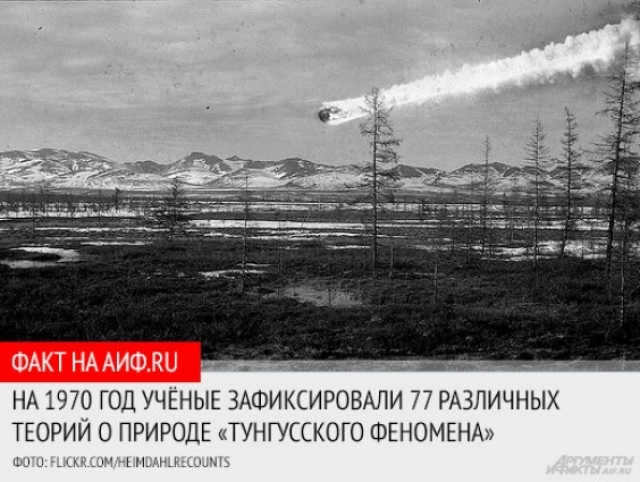
1. Meteorite
In line with the conventional theory, a large stone or iron meteorite, or even a whole swarm of meteorites, crashed into the Earth on June 30, 1908.
The most apparent explanation has one weak spot – several expeditions to the location of the alleged meteorite impact failed to uncover any debris or remnants of meteoritic material. Furthermore, the forest in the area of the cosmic catastrophe was flattened over a large area, except for the exact spot where the meteorite crater should have been – the trees remained standing.
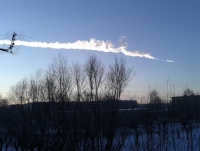
Advocates of the theory that a meteorite caused the Tunguska event argue that although the meteorite itself did not survive the explosion and disintegrated into numerous small fragments, these fragments did fall to Earth. The challenge, however, lies in the fact that a significant quantity of these fragments has not been discovered to date.
2. Comet
The version known as “comet” emerged subsequent to the meteorite theory. The key distinction lies in the nature of the substance that triggered the explosion. Comets, unlike meteorites, possess a loose structure, with ice being a fundamental component. Consequently, the substance of the comet rapidly deteriorated upon entering Earth’s atmosphere, and the explosion completed its disintegration. This is why, according to proponents of this theory, no traces of matter can be found on Earth – simply because they did not exist.
Comet and meteorite theories exist in various forms, sometimes overlapping with one another. However, no one has yet managed to definitively prove their case.
From a logical standpoint, the credit for theorizing the artificial origins of the “Tunguska phenomenon” can be attributed to a science fiction author. In 1946, a Soviet writer named Alexander Kazantsev published a story entitled “Explosion” in the magazine “Around the World.” In this story, Kazantsev proposed the idea that a spaceship from extraterrestrial beings had crashed near Podkamennaya Tunguska. According to Kazantsev’s narrative, the spaceship was equipped with an atomic engine, which ultimately caused it to explode. Drawing a comparison between the explosion of the “Tunguska phenomenon” and the atomic bomb explosions in Hiroshima and Nagasaki, the writer pointed out the striking resemblance between the surviving forest in the epicenter and the surviving apartment buildings in Hiroshima’s blast zone. Additionally, Kazantsev noted the similarity of the seismograms from these events.
Kazantsev’s interpretation received a lively reception and garnered a multitude of proponents who built upon and reshaped it.
Scientists have consistently harbored deep skepticism towards the extraterrestrial explanation of the event, yet the main issue remains the same in this case – the lack of physical evidence.
As early as the 1980s, Alexander Kazantsev revised his interpretation. According to him, stranded aliens piloted the craft away from Earth, resulting in its explosion in outer space, and the “Tunguska meteorite” was actually the touchdown of their orbital module.
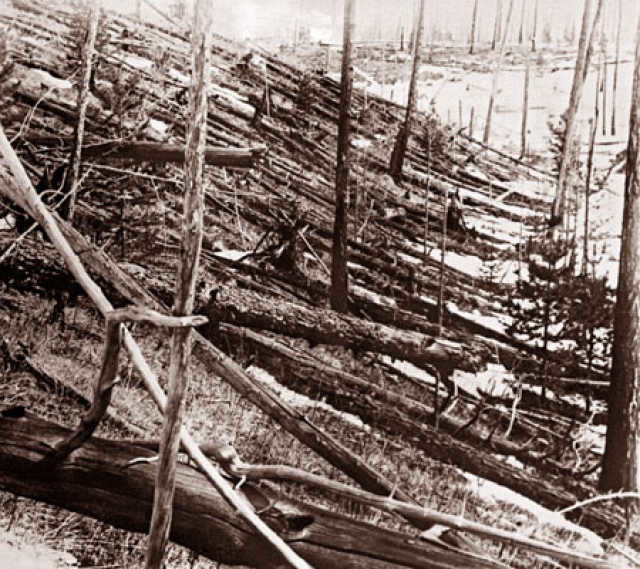
4- Experiment by Nikola Tesla
Nikola Tesla, an eminent physicist born in Serbia, was known as the “master of electricity” during the early 20th century. He conducted numerous experiments related to the technology of wirelessly transmitting electricity over long distances.
One of his hypotheses suggests that on June 30, 1908, Tesla conducted an “energy super-shot” from his laboratory in the region of Alaska to practically test the capabilities of his equipment. However, due to technological imperfections, the energy directed by Tesla went much farther and caused extensive destruction in the area of Podkamennaya Tunguska.
After becoming aware of the repercussions of the experiments, Tesla decided not to disclose his participation in the event. The magnitude of the devastation compelled Tesla to cease conducting such extensive tests.
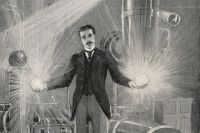
One flaw in this theory is the lack of evidence supporting Nikola Tesla’s experiment on June 30, 1908. Additionally, Tesla no longer owned the laboratory from which the supposed “super-shot” was made by that time.
In 1948, scientist Lincoln LaPaz proposed the idea that the Tunguska event was caused by a collision between matter and antimatter from outer space. This theory suggests that annihilation, the mutual destruction of matter and antimatter, resulted in a significant release of energy. The presence of radioactive isotopes in the wood material found at the explosion site provides support for this theory.
In the 1960s, Soviet physicist Boris Konstantinov went even further, suggesting that a comet made of antimatter had entered Earth’s atmosphere. This would explain why no debris has been found, as antimatter would completely annihilate upon impact.
While the little-known nature and properties of antimatter allow for the possibility of such a scenario, many scientists remain skeptical.
6. Ball lightning
In 1908, during the investigation of the “Tunguska phenomenon,” the initial hypothesis put forward by researchers was that a massive ball lightning caused the explosion.
Even today, the true nature of ball lightning, a rare and enigmatic natural phenomenon, remains only partially understood. It is likely because of this lack of understanding that the “ball lightning” theory gained popularity among scientists in the 1980s.
According to this theory, a colossal ball lightning formed at the location of the catastrophe, emerging in the Earth’s atmosphere due to the intense energy transfer from regular lightning strikes or sudden fluctuations in the atmospheric electric field.
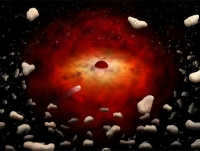
7. An Encounter with a Cosmic Dust Cloud
In the year 1908, a theory was put forward by French astronomer Felix de Roy, suggesting that on the 30th of June, the Earth had a collision with a cloud of cosmic dust. This theory gained further support in 1932 when the renowned academician Vladimir Vernadsky proposed that the movement of cosmic dust through the atmosphere led to the formation of powerful silvery clouds from the 30th of June to the 2nd of July, 1908. Later in 1961, Gennady Plekhanov, a biophysicist and passionate researcher of the Tunguska phenomenon, presented a more detailed hypothesis. According to Plekhanov’s theory, the Earth passed through an interstellar cloud of cosmic dust, with one of the larger conglomerates of this cloud being the object that is now known as the “Tunguska meteorite”.
Gennady Plekhanov came up with a comical variation, somewhat far-fetched, that could be called “version 7-bis”. While being attacked by mosquitoes during one of his expeditions in the Podkamennaya Tunguska area, he suggested that on June 30, 1908, a swarm of mosquitoes with a volume of at least 5 cubic kilometers gathered at this location, resulting in a massive thermal explosion that caused the forest to collapse.
There is another unique interpretation of the “Tunguska phenomenon” that is linked to the science fiction authors Arkady and Boris Strugatsky. This idea was humorously portrayed in their story “Monday Begins on Saturday”. In this version, it is suggested that on June 30, 1908, a spaceship took off from the area of Podkamennaya Tunguska. The spaceship’s arrival occurred slightly later, in July, because it was not just any alien ship but a ship carrying aliens-contramots, beings from a universe where time flows in the opposite direction to ours.
However, if the Strugatsky brothers’ portrayal of the aliens-contramots was lighthearted, in the early 1990s, the renowned Ufologist and leader of the association “Cosmos”, Vadim Chernobrov, presented it as a completely serious explanation of the Tunguska event. Chernobrov, a well-known ufologist and leader of Cosmopoisk, proposed this theory.
Although researchers have not yet discovered a convincing and definitive confirmation of any of the hypotheses regarding the “Tunguska phenomenon”, each of them, despite the understandable skepticism, has the right to be considered.
This even applies to the explanation put forward by one of the Chelyabinsk pensioners in relation to another event, the Chebarkulskogo meteorite.
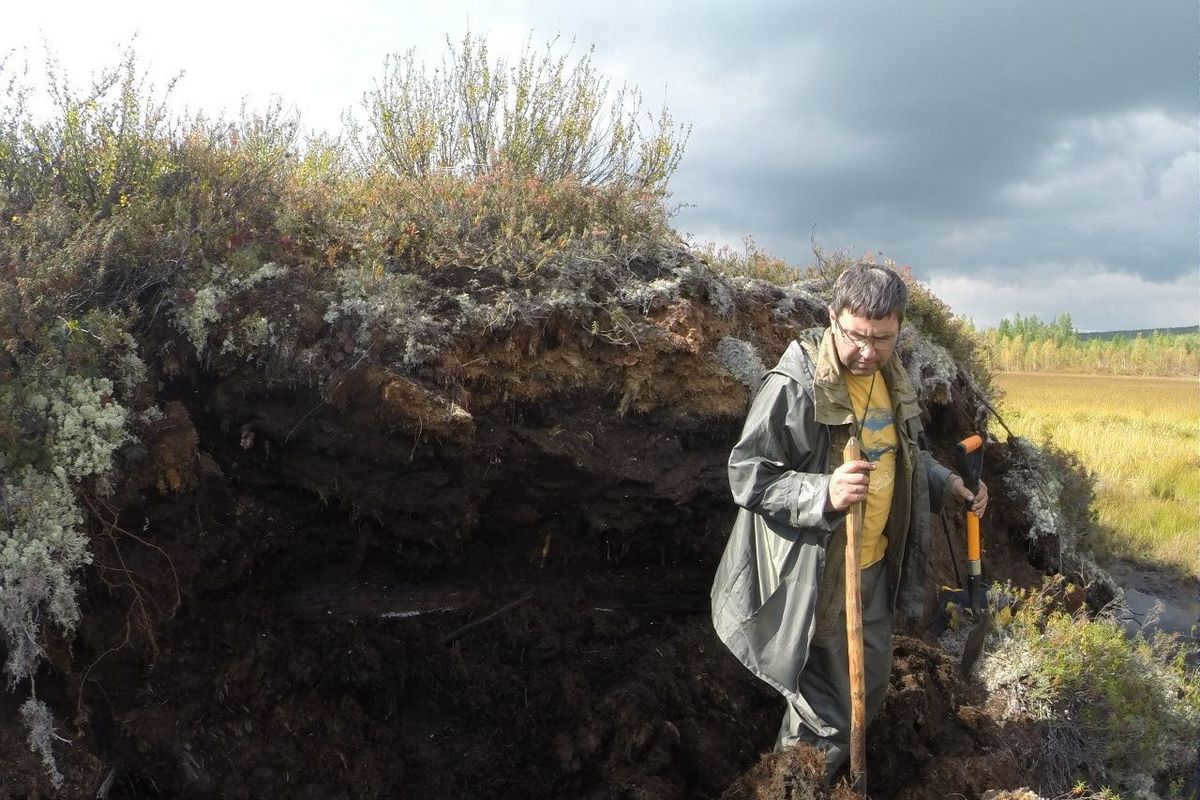
The Tunguska catastrophe remains one of the most enigmatic events of the past century. Despite numerous accounts from witnesses and numerous expeditions, no remains of the meteorite have ever been discovered. The prevailing theory in the scientific community is that the meteorite exploded before reaching the Earth’s surface. However, scientists from Nizhny Novgorod hypothesized that the meteorite did indeed make contact with the ground, and embarked on an expedition to search for the impact crater. NN.RU interviewed one of the participants in this expedition, Alexei Kiselev, a teacher at Minin University, to learn what they discovered.
Story of the Tunguska Meteorite
On the morning of June 30, 1908, a significant fireball illuminated the sky over central Siberia. Observers described witnessing a bluish-white object, although the intense light made it difficult to see clearly.
– The Krasnoyarets newspaper reported, “On the island opposite the village, horses and cows began screaming and running from one end to the other. It seemed as though the earth was about to split open and everything would plunge into the abyss.”
Shortly after, there was an explosion, followed by multiple others. The shockwave caused trees to topple over an area spanning two thousand kilometers. In nearby settlements, windows rattled, and objects tumbled from shelves. Evenks, whose camps were situated near the forest, later recounted to researchers how the trees around them caught fire and their reindeer scattered after the violent thunder.
Nonetheless, researchers of that era immediately posited the theory that a meteorite had traversed the skies above Siberia. The inaugural scientific expedition was not able to be organized until 1921, when the Academy secured the necessary funding. This marked the beginning of a more comprehensive examination of the Tunguska catastrophe.
Expeditions were dispatched to the area where the meteorite purportedly landed, but despite nearly a century of investigation, fragments of the cosmic entity have yet to be discovered.
Video: Alena Semakina, Anna Kurylyova, Vlad Cherkasov
What Nizhny Novgorod scientists aimed to discover
Alexei Kiselev developed an interest in the Tunguska catastrophe during his time in school. Over time, this fascination evolved into a study of meteorite craters. The scientist proudly considers himself a pioneer in investigating the meteoritic origins of Lake Svetloyar.
With the emergence of detailed photomaps of the Earth’s surface, such as Google Earth, Kiselev decided to explore what the site of the Tunguska meteorite impact looked like. This curiosity sparked further research. In 2008, he took part in an international expedition, but unfortunately, it did not yield any significant findings. Consequently, they had to invest several years in preparing for the subsequent expedition.
According to Alexei Kiselev, there has been a prevailing theory in scientific circles that the meteorite exploded in the atmosphere at an altitude of 5-10 kilometers. The material vaporized, and only a shock wave reached the ground.
– Our hypothesis proposes that this is not the case, that the meteorite actually continued its trajectory and impacted the ground, exploding upon contact and creating a meteorite crater. In fact, we attempted to locate and may have discovered the meteorite crater from the Tunguska event,” said the researcher.
This summer, an expedition was conducted with the support of Minin University, where Alexei Kiselev is a professor. The team also included Andrei Antonov from the Institute of Applied Physics of the Russian Academy of Sciences, and Yevgeniya Moroz, an inspector from the Tunguska Nature Reserve, who joined the scientists on-site. The three of them set out on their journey.
The location of the meteorite impact
Traveling more than five thousand kilometers by plane from Moscow to the village of Vanavara in the Krasnoyarsk region, then approximately 70 kilometers along the rivers, and finally on foot. The journey was challenging, navigating through forests and swampy terrain in drizzly rain. It took the researchers several days to reach the potential crater site.
– What impressed me the most were the checkpoints. When you’ve been walking all day and finally reach a checkpoint, it brings such pleasure and relief. Being able to melt a stove, warm up, sleep on a flat surface in a sleeping bag, and cook food without any smoke or soot, it’s a true luxury,” recalls Alexey Kiselev.
The aim of the expedition was to investigate the circular formation in the Southern Bog, which, based on the scientist’s calculations, appeared to be the most suitable candidate for a meteorite crater. This was supported by the map of the forest debris, which served as one piece of evidence. Additionally, the surrounding swamp, described as “remarkably even and flat,” led Kiselev to believe it was relatively young.
The teacher pointed out that the epicenter, or designated target area, was quite intricate. It was an ancient paleovolcano situated on hilly terrain. According to him, the swamp had engulfed the crater and flattened it considerably.
– If this were happening somewhere in the Nizhny Novgorod region, where we have sandy soil, we would immediately observe signs of an explosion. However, witnessing one explosion on top of another is rather perplexing,” remarked the researcher.





